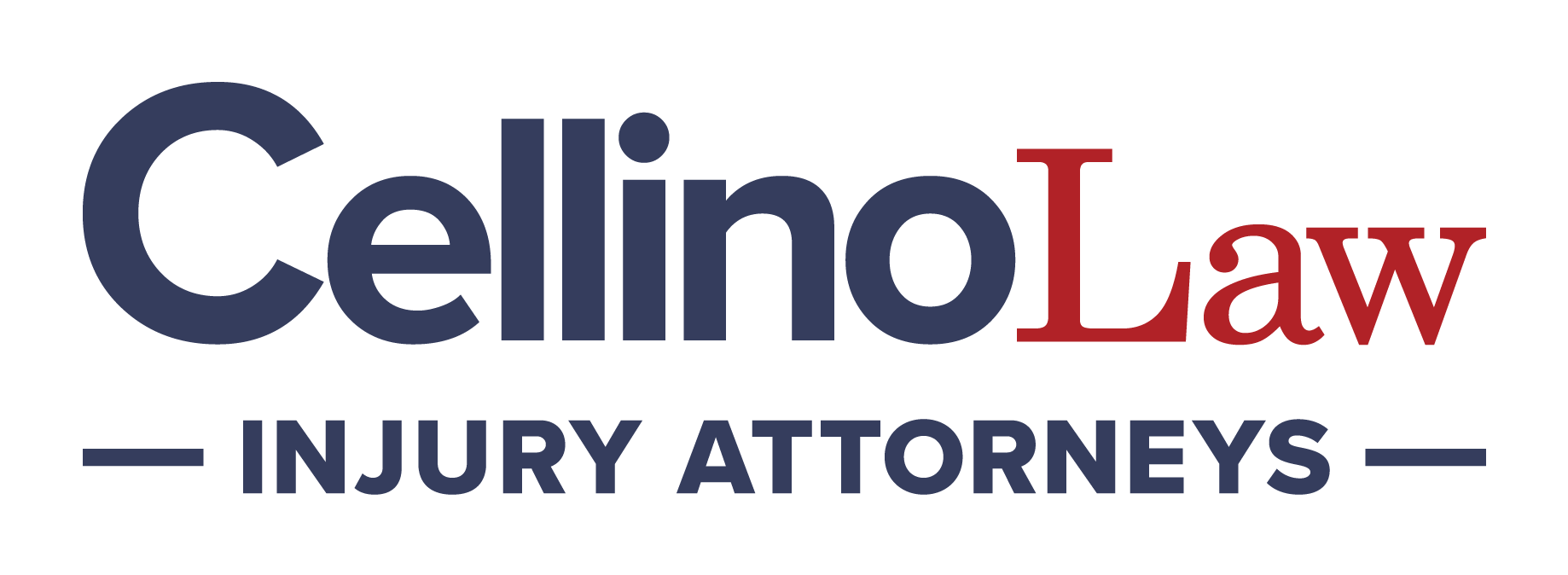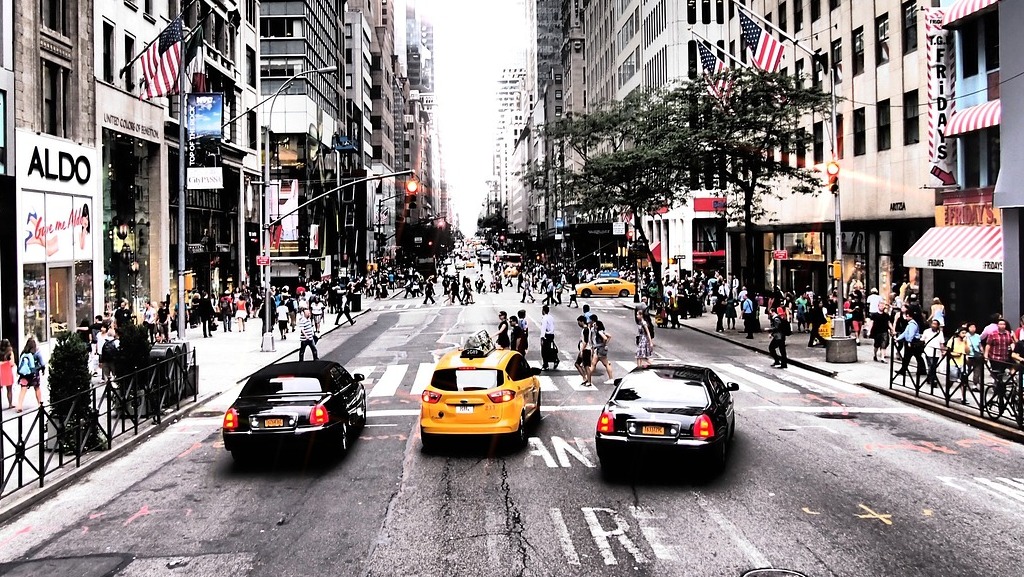While approximately 20.5 million people live in New York State, about 43% live in New York City. NYC is a bustling metropolis, with a population of 8.5 million, more than 60 million visitors annually, 4.4 million vehicles on the roads daily, and people hopping on their bicycles 550,000 times daily in a 300-square-mile area.
Both the state and the city prioritize pedestrian safety, but that doesn’t mean accidents resulting in injuries and fatalities don’t occur in large numbers. Here we review statistics, government safety measures, and steps you can take to improve your safety as a pedestrian in New York and NYC.
Pedestrian Accidents by the Numbers
Every year in New York State, the number of pedestrians injured by motor vehicles averages 15,000, with 3,000 requiring hospitalizations. Another 300 lose their lives. Between 2016 and 2020, pedestrian fatalities (including cyclists) on the state’s roadways comprised 22%-29% of all traffic accident deaths. The primary accident causes were due to motorist behaviors, including:
- Speeding
- Distracted driving
- Impaired driving
- Failure to yield
Pedestrian behavior, such as impairment, distraction and inconspicuous attire, also contributed to accidents. A disregard for pedestrian traffic rules also played a part.
Pedestrian fatalities in NYC accounted for 40% of all state fatalities, Upstate NY 37% and Long Island 23%. These data don’t include cyclist fatalities. Overall, the number of deaths declined year over year during the five-year period.
During the 2016-2022 time period in NYC, nearly 1.2 million pedestrians sustained injuries, and more than 62,000 died in traffic collisions. In 2022, three children under age 18 died after getting hit by a car while biking or walking to or from school, with the number of pedestrian fatalities totaling 114. More than half of the accidents occurred at night.
However, pedestrian fatalities in 2022 were at their lowest levels on record, declining by 6.3% from 2021 and going against the national trend of increasing non-motorist deaths in traffic accidents. Within the first two months of 2023, 598 people were hurt after getting struck by a vehicle on NYC streets, and six people died.
New York State Measures To Improve Pedestrian Safety
In 2016, the Governor’s Traffic Safety Committee and the New York State Departments of Health and Transportation created and implemented the Pedestrian Safety Action Plan to address rising concerns about the number of non-motorists killed or injured in traffic accidents. The plan focuses on engineering, education and enforcement measures.
Engineering
Engineering efforts aim to create pedestrian-friendly streets through design, creating new features and enhancing existing ones. The idea is that traffic infrastructure should support safety, mobility and access for non-motorized users. Examples include increased lighting and signage, pedestrian bridges and footpaths, and barriers between vehicles and foot traffic in high-traffic areas.
Education
The plan takes the perspective that everyone is a pedestrian. Motorists and non-motorists alike need to know the rules and stay alert when using roads and walkways. The state developed a campaign called “Operation See! Be Seen!” and provided educational materials law enforcement could distribute. They also made them available online.
Enforcement
Education extends to efforts to ensure law enforcement officers receive training. The training is not just for understanding state traffic laws pertaining to pedestrians but also to help them learn how to educate the public about pedestrian and bicycle safety. Additionally, for one month each summer, Operation See! Be Seen! is also a statewide event during which law enforcement up their enforcement efforts, handing out warnings when they catch motorists or pedestrians not adhering to the law.
New York City Measures To Improve Pedestrian Safety
Pedestrian safety has long been a concern in the Big Apple, understandably. Risks are inherent in such a densely populated and high-traffic area. One of the biggest challenges to any measures the city takes is its geographically constrained nature. There is little room to create additional infrastructure or widen streets. Despite the limitations, the city has found ways to make improvements, with highlights including:
- Reduced the speed limit across the city to 25 m.p.h.
- Installed 2,000 speed cameras that operate in the city’s 750 school zones
- Passed a law that took effect in 2022, allowing speed cameras to operate 24/7
- Completed approximately 1,000 significant projects that improved roadways
In 2014, NYC became the first city to implement a campaign to eliminate traffic fatalities. Vision Zero is a broad initiative addressing traffic accidents in general, not just those involving pedestrians. However, pedestrian and cyclist safety are important elements. Vision Zero approaches traffic safety with engineering, education, enforcement and legislative action.
Vulnerable Populations
Two significant engineering initiatives focus on the most vulnerable segments of the population: seniors and children. Though seniors comprise less than 15% of the Big Apple’s population, they are the victims of nearly half of all pedestrian fatalities.
Senior citizen deaths are not due to differences in how they use roads or the number of times they are struck by a vehicle. Instead, it is due to the fact that they are less likely to recover from their injuries. The city is developing interventions in high-risk areas focusing on design features, such as calm turns, longer crosswalk times and safe passages to bus stops.
Creating safe routes is also important for school-aged children, and the city is implementing plans to ensure children can get to and from school safely. Traffic calming measures, such as reduced speed limits, cameras and additional signage, are all part of the plan, as is educating school children and the broader public.
Intersections
Intersections are dangerous for motorists and non-motorists alike. In 2022, the city announced plans to address pedestrian safety at crossroads. The new initiative focuses on engineering design elements. The two most significant measures for foot traffic are plans to build raised crosswalks and double the number of installed turn-calming features.
What You Can Do To Remain Safe
You can’t control driver behavior, but you can take steps to reduce your risk as a pedestrian. In New York, pedestrians are legally obligated to follow state traffic laws, obeying signage, signals and pavement markings. At crosswalks and intersections, where there are no traffic signals, cars must yield the right-of-way to pedestrians, but you should always take extra precautions and ensure they stop before you enter the crosswalk.
If you cross in the middle of a block without a crosswalk, traffic control signs, or signals, you must yield to motorized and bike traffic. When there are safe sidewalks, the law requires you to use them. If there aren’t, you must walk facing traffic on the left side of the street. You also can’t cross intersections diagonally unless signals, signage and pavement markings indicate you can. Other safe behaviors include:
- Use pedestrian crossing signals, activating them when you arrive at an intersection or crosswalk.
- Follow the guidelines to look left, right and left again, checking over your shoulder for turning vehicles.
- Don’t text and walk, especially when crossing streets.
- Wear highly visible clothing after dark and in inclement weather.
When possible, make eye contact with drivers before you cross in front of them to ensure they see you.
Who You Can Call if You Are Hurt as a Pedestrian
If you sustain injuries in a traffic accident as a pedestrian, Cellino Law is here to help. We will help you understand your rights and options whether you choose to hire us. If you work with us, we will fight for you to pursue fair compensation. Get in touch with us today for a free case review.


